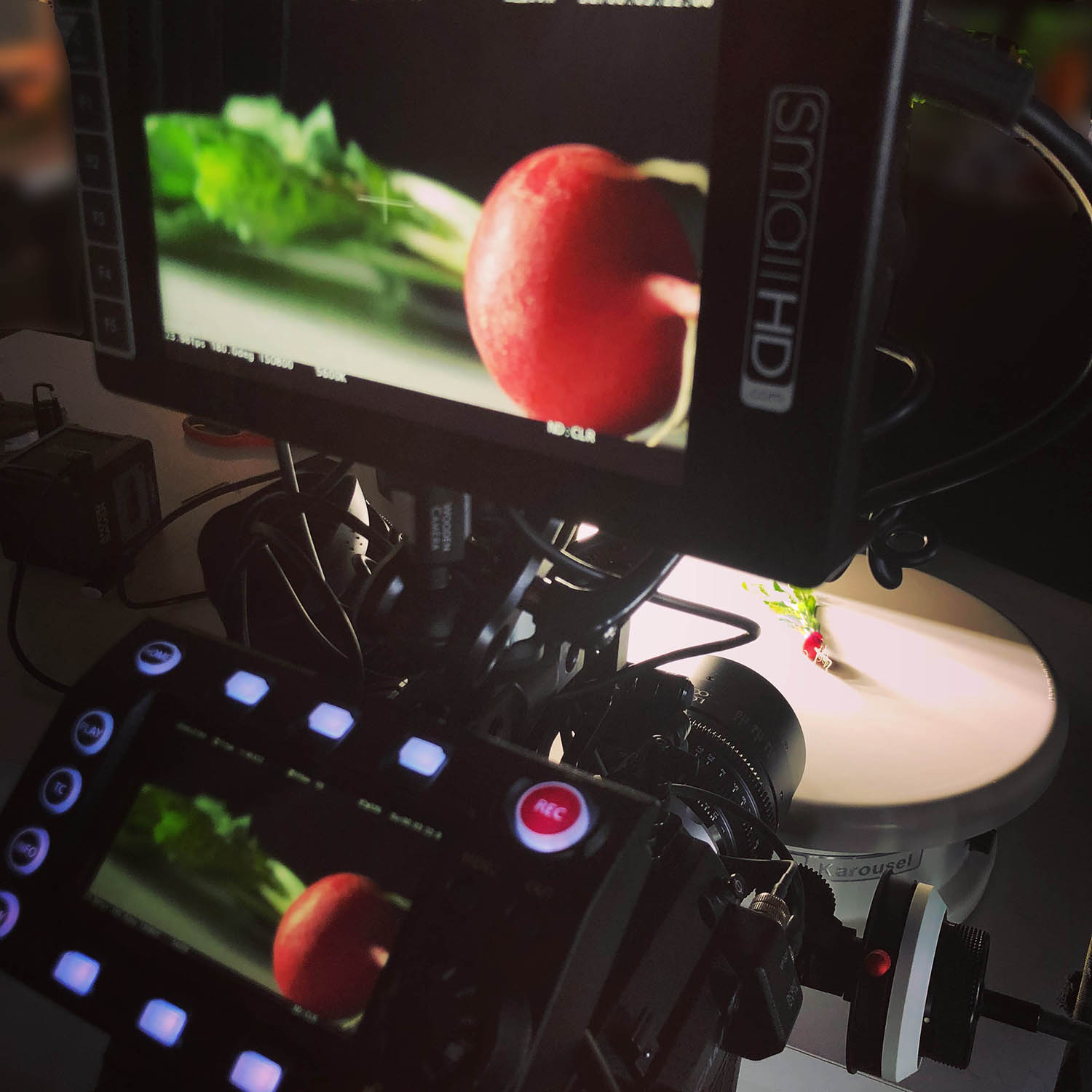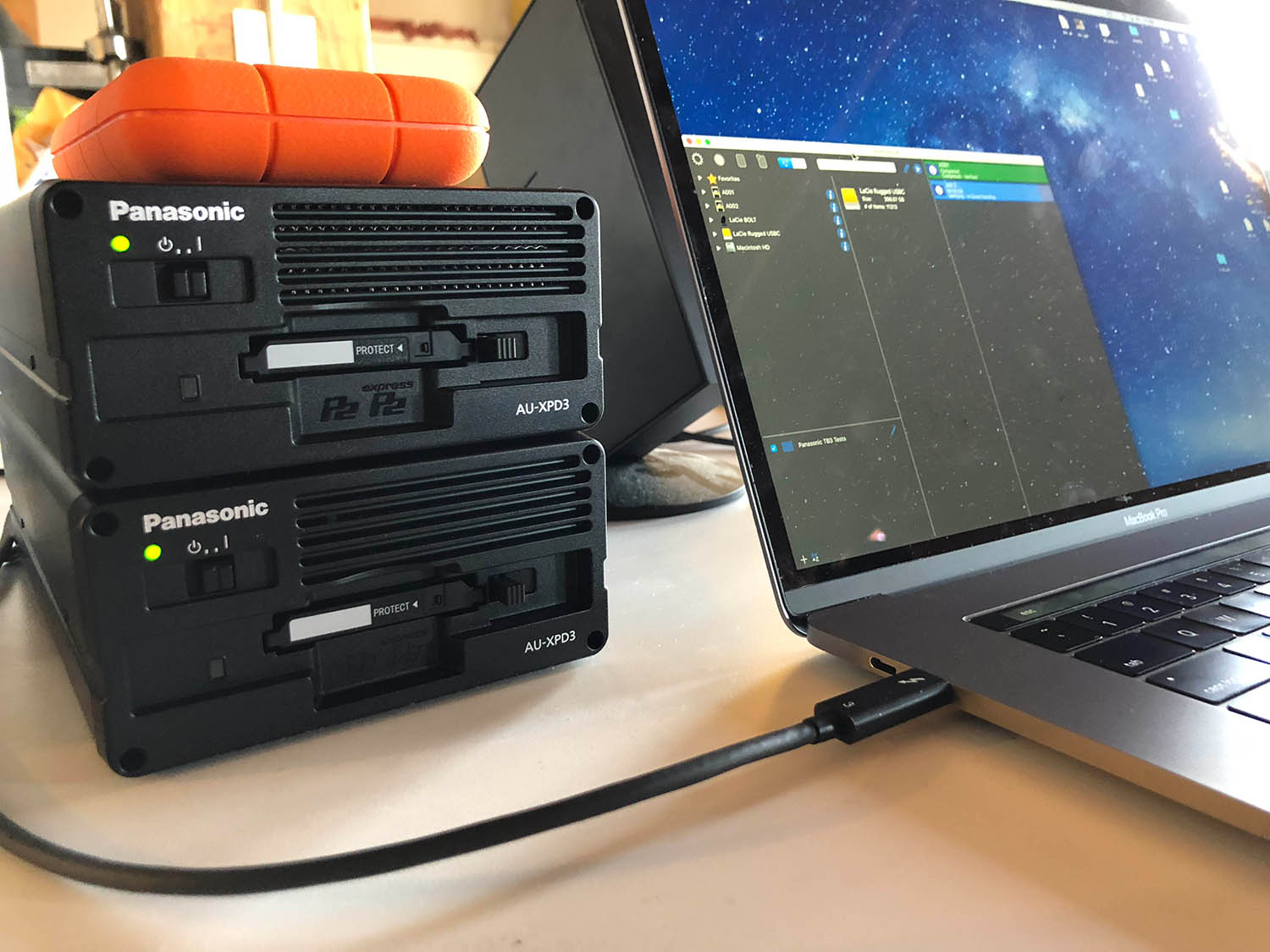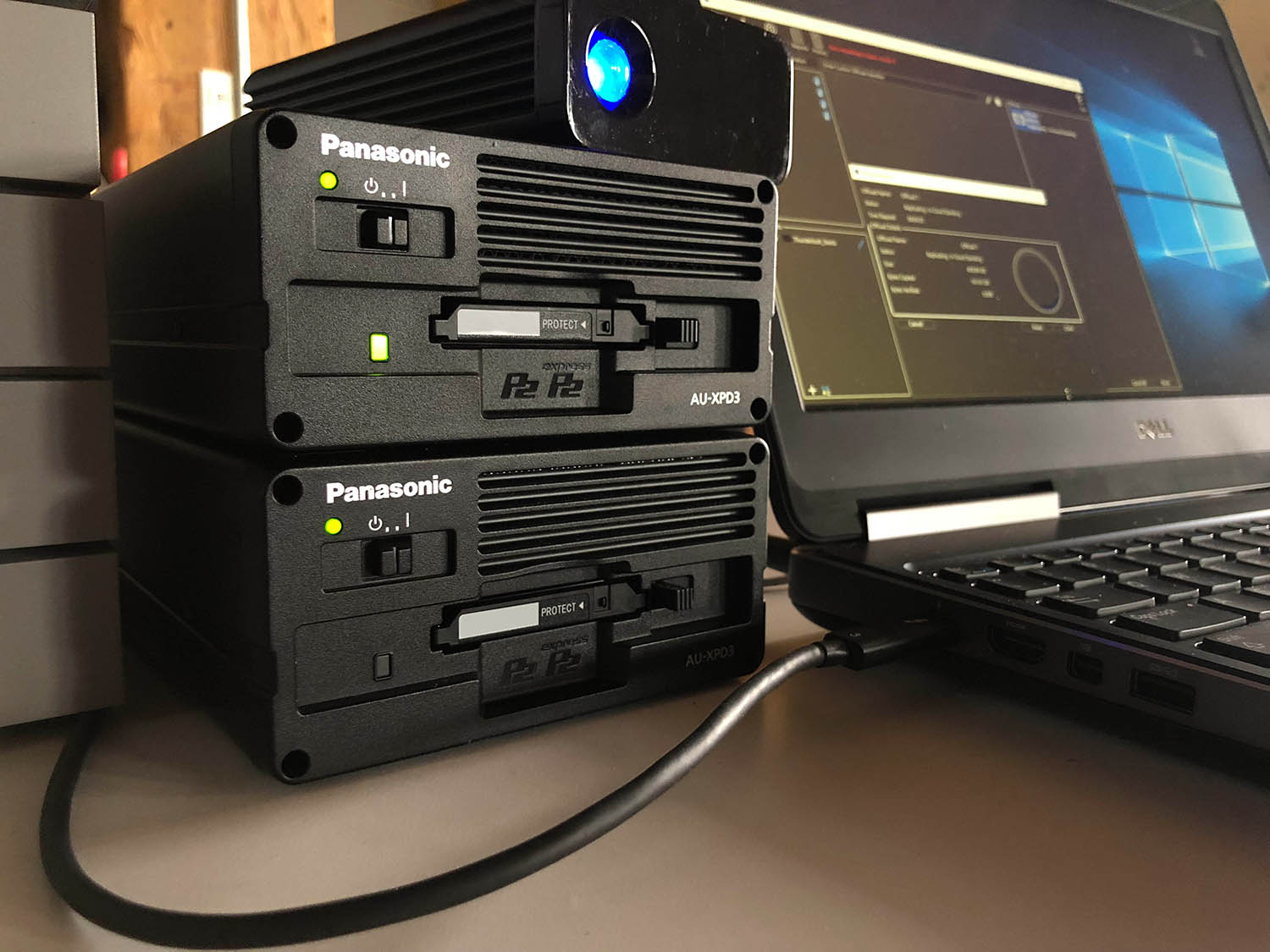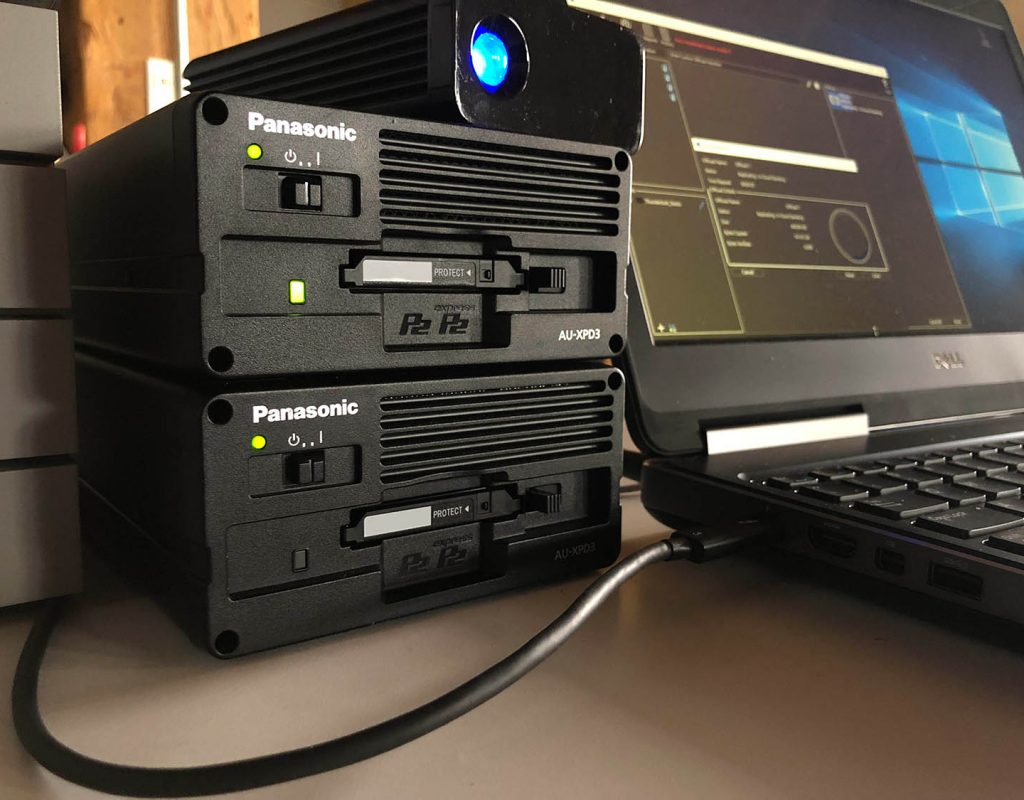For a recent test project, I was offered a chance to use one of Panasonic’s Varicam LT’s to shoot with, so as an old Panasonic guy, I leaped at the chance. In the early years of the transition to HD, I was the resident post instructor touring with Panasonic’s Varicamp training classes. Being an early convert, I have been intrigued at how Panasonic had progressed in the Cine space as their camera systems evolved. I have always liked how their sensor technologies have recorded images since the tape-based Varicam.

The tapeless generation of Varicam’s now come in a variety of flavors. We’ve got the Varicam Pure© with it’s integrated Codex© recorder, designed for the high end commercial and cine applications when the Raw data is required for highest quality in post. You also have the utilitarian Varicam 35©, with it’s modular body, capable of shooting variable frame rates in both Raw and Compressed codecs and my chosen tool. Finally, there’s the smaller, lightweight Varicam LT© with internal recording of Panasonic’s 422 AVCHD codec and optional external capture of the RAW codec via an Atomos or Convergent Design recorder.
While the Varicam LT does not offer all of the frame rates or multiple compression types that are available compared to the 2 full-size Varicams models, the LT’s reduced form factor and ease of use more than makes up for those minor limitations. Considering that this camera works natively at either ISO 800 or ISO 5000, the lighter weight and ease of use make the Varicam LT a true production workhorse with stunning low light sensitivity.

Additionally, Panasonic onset workflow model has embraced Intel’s latest Thunderbolt 3 for the connectivity to handle their data-centric workflow needs. While the Varicam LT itself performed beyond my expectations, I was nothing short of elated with the ease of use and simplicity of Panasonic’s recommended workflows process. It’s a workflow that is designed around current needs and capabilities, yet one that is open and flexible enough to handle whatever frame rates and formats that might be on the horizon.
So, I hammered on that workflow for more than a week, testing the acquisition and ingest process on both Mac’s and PC’s just to see if there were any distinct advantages or disadvantages in using one platform over the other for handling data in production. The Panasonic’s AU-XPD3 media reader, with dual Thunderbolt3 ports, provides power users or working data handlers with the ability to attach multiple XPD3 readers in line with your chosen media storage devices via a single Thunderbolt cable, bringing up one of the most interesting aspect of the Varicams data workflow that I found.

Windows users have a couple of extra hurdles with permissions, but once configured the Thunderbolt buss should respond the same on both platforms
Approach your media ingest methodicallyI always recommend setting up your computer for data handling with all your storage, shuttle drives and cables in a coordinated manner that is consistent with your normal working environment. Exposed Media moves from left to right on my platform, with ingest the starting point on the left side of my configuration. The processed media physically moves from the left to my captured / processed / open media on my right as I work. Then I start the transfer process via my chosen software tool. I find that “drag & drop” copying on both Mac an Windows tends to be somewhat lacking, often failing to transfer all of the data as written to the media. It’s why I use dedicated applications for handling data like Imagine Products “ShotputPro” or Pomfort’s “Silverstack” to assure my transfers are verified as complete. While waiting for the data to transfer, I spend that time writing down both the camera info and card id numbers in my daily log in addition to using this time to type in specific keywords and additional script or incidental metadata to include the file archive. After the transfer of each piece of Camera media has been offloaded, I always double check for transfer errors and quickly look at every shot and take from the data that has been transferred to my system. Yes, while it can be quite time-consuming, I have found that it is far better to spend time here checking the content onset, as shooting errors, shot omissions or camera malfunctions caught this early in the process will always cost less to fix or reshoot at this point in production. Have a Plan Stay organized My media readers stay on one side of my workspace with my storage being setup on the other side, creating a simple flow from ingest to the transferred media. I prefer using raided storage arrays like the LaCie’s 6Big or G-Tech’s GSpeed Shuttle for my onset storage. For me, it’s about having the faster data transfer speeds in addition to the added security layer of hardware-based redundancy available in raided storage solutions. Label Everything Redundancy Whether you are an aspiring still shooter or seasoned filmmaker, never, ever, keep your backups and your masters in the same place. Most of the data handlers I know use a Raid setup for the first copy, then make a secondary copy for shuttling to post, and then a 3rd copy to hold until confirmation from Post that they have all the camera data for that day. |
A single UA-XPD3 card reader, with a maximum transfer rate of 10Gb/s, barely puts a dent in TB3’s 40Gb/s bandwidth capacity. However when a user connects 2 of the UA-XPD3 units together to streamline your data management, the aggregate bandwidth delivered from those 2 units is capable of saturating your data pipeline, decreasing transfer times and speeding data management tasks.
In my testing, I found that I could transfer a full single 512GB ExpressP2 card in about 8 minutes. When handling the data from 2 -512Gb cards via a dual reader configuration though, I was astounded when the “time to transfer” held steady at roughly that same 8 minutes, despite the fact that the through-put of my camera data had doubled from 512GB to one 1TB of data to be transferred. Each of the XPD3 units communicate their data needs to the host computer, and because of the way Thunderbolt devices communicate with each other, each of the 2 readers is capable of delivering it’s full data steam simultaneously without overlapping the bits and bytes in the process within the 40Gb/s of bandwidth available.
I was absolutely intrigued by my initial tests on MacOS, where I needed to do little more than download the latest P2 / MXF driver from Panasonic and plug everything in. To see, I grabbed a couple of my PC’s and tested the same process on 3 TB3 enabled laptops, one each from Dell, Lenovo and Asus, seeing virtually the same results on both platforms when working in the most current version of Windows 10 or the MacOS.

Windows users who are new to Thunderbolt workflows have a couple of additional steps adding Thunderbolt or other storage devices to their computer systems. The Windows OS has a number of built-in security measures designed to thwart the connection of unwanted devices. That additional security measure needs to be addressed so that external devices are handled correctly every time they are plugged in.
First off, every Thunderbolt device you connect to your PC will need to be manually identified and allowed access. A dialog box for Approved Thunderbolt Devices will open, asking if you would like to add the each of devices you have plugged into your “Thunderbolt device chain”. The dialogue box will prompt “Do Not Connect”, “Connect Once” and “Always Connect” options and demand user interaction to proceed. Selecting the “Always Connect” option during the installation process means you will no longer be interrogated by your computer when plugging an approved Thunderbolt device into it. Note too, that if you select the “Do Not Connect” option, your system will prevent that specific device and any other devices downstream on that Thunderbolt Chain from being accessed or accessible.

I also I found the entire transfer process typically quite a bit slower when using Thunderbolt on older versions of Windows OS (especially Vista), taking 2x-5x longer for the data transfers, while also forcing the user to deal with finding and installing multiple often obscure, software and hardware drivers and their associated firmware issues. To get the most out of your Thunderbolt 3 connectivity on Windows, with the least amount of distractions or disruption, I recommend all users try to work in the latest versions of Windows 10 just to simplify your connectivity issues and general data handling woes.
By embracing Thunderbolt3’s open connectivity for their workflows, Panasonic has once again stepped to the forefront of indie filmmaking. It’s a development that is much like when they were the first camera manufacturer to openly embrace Firewire’s capabilities. Utilizing all of the speed and power found in Thunderbolt3 means Panasonic truly cares about filmmakers and the filmmaking process.They are once again blazing a path forward that camera manufacturers will soon be following.
Video for this article is below:

Filmtools
Filmmakers go-to destination for pre-production, production & post production equipment!
Shop Now













